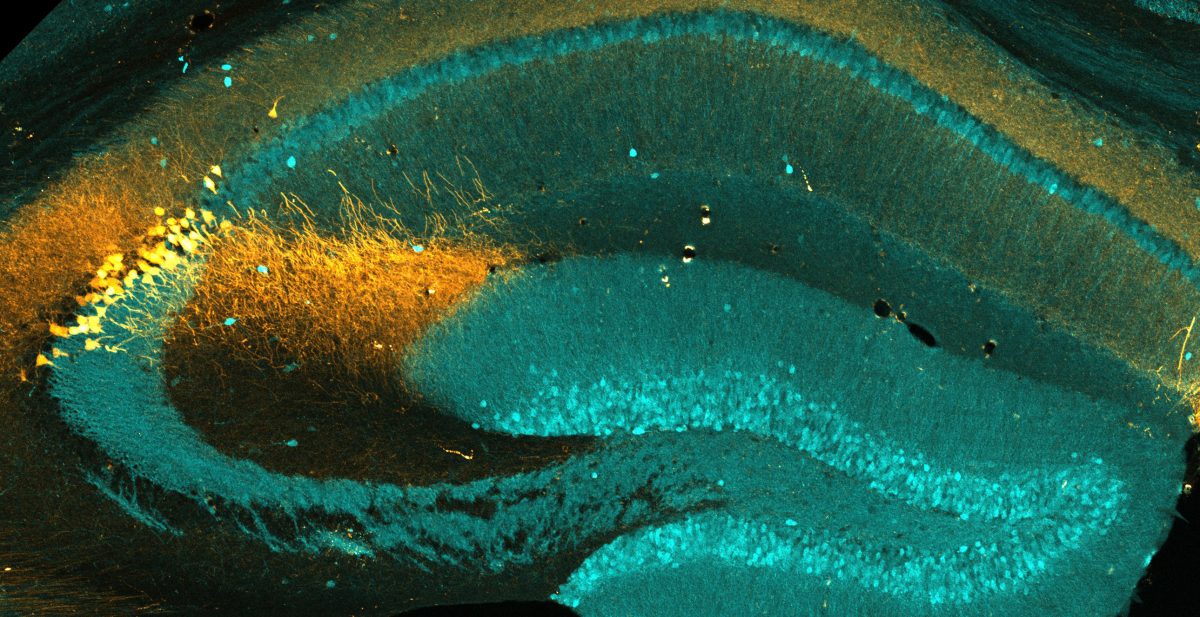Research in the Farris lab focuses on understanding the molecular and cellular mechanisms underlying learning. In particular, we are interested in understanding how neurons respond during learning and how those responses differ between genetically distinct cell types thought to be required for storing different parts of memory, such as who, what, when and where.
Neurons engaged during a learning experience often respond by altering the levels of transcription and translation of molecules needed for memory storage. One of the many challenges that neurons need to overcome is the distance between where molecules are made (in the nucleus) and where they are needed (at the synapse), which is often hundreds of microns away. One way neurons achieve this is by localizing RNA molecules to the synapse, so that they can be rapidly translated in response to local cues, such as changes in the activity of specific inputs. These newly synthesized proteins can then remodel the strength of synaptic connections in an input- and synapse-specific fashion. It’s widely believed that changes in the strength of specific synapses (both increases and decreases) are the molecular correlate of memory storage in the brain.
Currently, the lab is focused on investigating dendritically localized RNAs and the organelles and machinery to support local translation in area CA2 of the hippocampus, a subregion that is resistant to long-term potentiation (synapse strengthening) and cell death, and is thought to be required for storing social memory, or “the who” aspect of memory. Given that a number of neurodevelopmental disorders are characterized by disruptions in social processing, investigating the post-transcriptional mechanisms critical to CA2 function and gaining a comprehensive molecular understanding of how social experiences are stored in the brain may lead to novel therapies relevant for individuals with social deficits.
Using a combination of mouse genetics to gain access to specific hippocampal cell-types, deep sequencing technologies to obtain a genome-wide view of transcription and translation, and single molecule imaging techniques to illuminate the processes regulating dendritic RNA in vivo, we hope to provide mechanistic insight on the behaviorally-induced synaptic modifications in CA2 that may be required for encoding social behavior.







You must be logged in to post a comment.